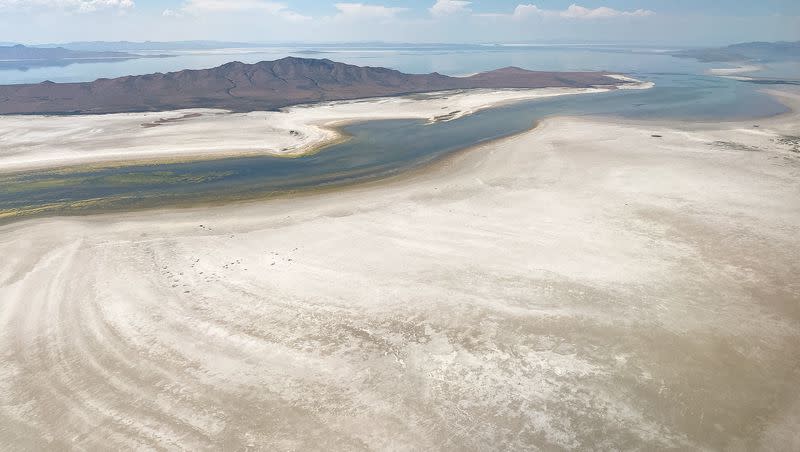Utah has a first strategic plan aimed at getting the GSL to good health

The state’s first ever comprehensive strategic plan designed to help get the Great Salt Lake to healthy levels — and keep them there — was released Tuesday, embracing a multifaceted approach.
The strategy in the report deploys short-, medium- and long-range solutions in a holistic way.
“The plan represents an initial strategy to more effectively protect the lake while balancing the other ecological, economic and societal interests surrounding the lake,” Great Salt Lake Commissioner Brian Steed said. “Restoring the lake to a healthy range is not a one-year, one-policy, one-constituency solution. It will take a coordinated, data-driven approach so decision-makers can evaluate tradeoffs and balance competing interests.”
The progress grew out of the 2023 legislative session in which Utah lawmakers passed HB491 to create the position Steed now holds and also direct his office prepare such a report.
Among other things, the plan calls for:
Coordinating the efforts of a wide variety of agencies and stakeholders and ensuring robust public engagement on issues related to the lake.
Utilizing the best available science and data when making decisions that impact the lake.
Getting more water to the lake and ensuring a sustainable water supply while balancing competing needs, including human health and quality of life, a healthy ecosystem and economic development.
Conserving water across different sectors (municipal, industrial and agricultural), including quantification of water savings and shepherding saved water to the lake.
Protecting air and water quality.
The effort also grew out of what was seen as an improved need to coordinate the resources of the various state agencies involved in the lake and to better harness their effectiveness. The lake dropped to its historic low in October, and some fear it may grow worse before it gets better.
Related
That downward spiral leads to many ill effects, including exposure of the lakebed where winds kick up toxin laden metals laden in the dust, a damaged ecosystem that imperils millions of migratory birds that use the lake and its wetlands as a resting and nesting area, and a $67 million brine shrimp industry that could literally see its future dry up before its eyes.
The Great Salt Lake is the largest saline lake in the Western Hemisphere and the eighth largest in the world — boasting a rich web of relationships between people, land, water, food and survival, according to the Utah Department of Natural Resources.
The lake contributes $1.9 billion to Utah’s economy, provides over 7,700 jobs, and supports the highest concentration of Utah’s valuable wetlands.
Related
In the plan, Steed said he is committed to establishing a target range for the lake between 4,198-4,205 feet, based upon the healthy range for the long-term health of the entire Great Salt Lake using the Great Salt Lake Elevation Matrix. Steed is proposing to develop a plan for the lake to reach the target range within the next 30 years.
“Striking the right balance for the Great Salt Lake is no small task, especially among the pressures of continued growth, sustained drought and higher temperatures that threaten to increase demand and shrink available water supplies even further,” Steed said. “It will take all of us working together to protect and sustain the lake.”

